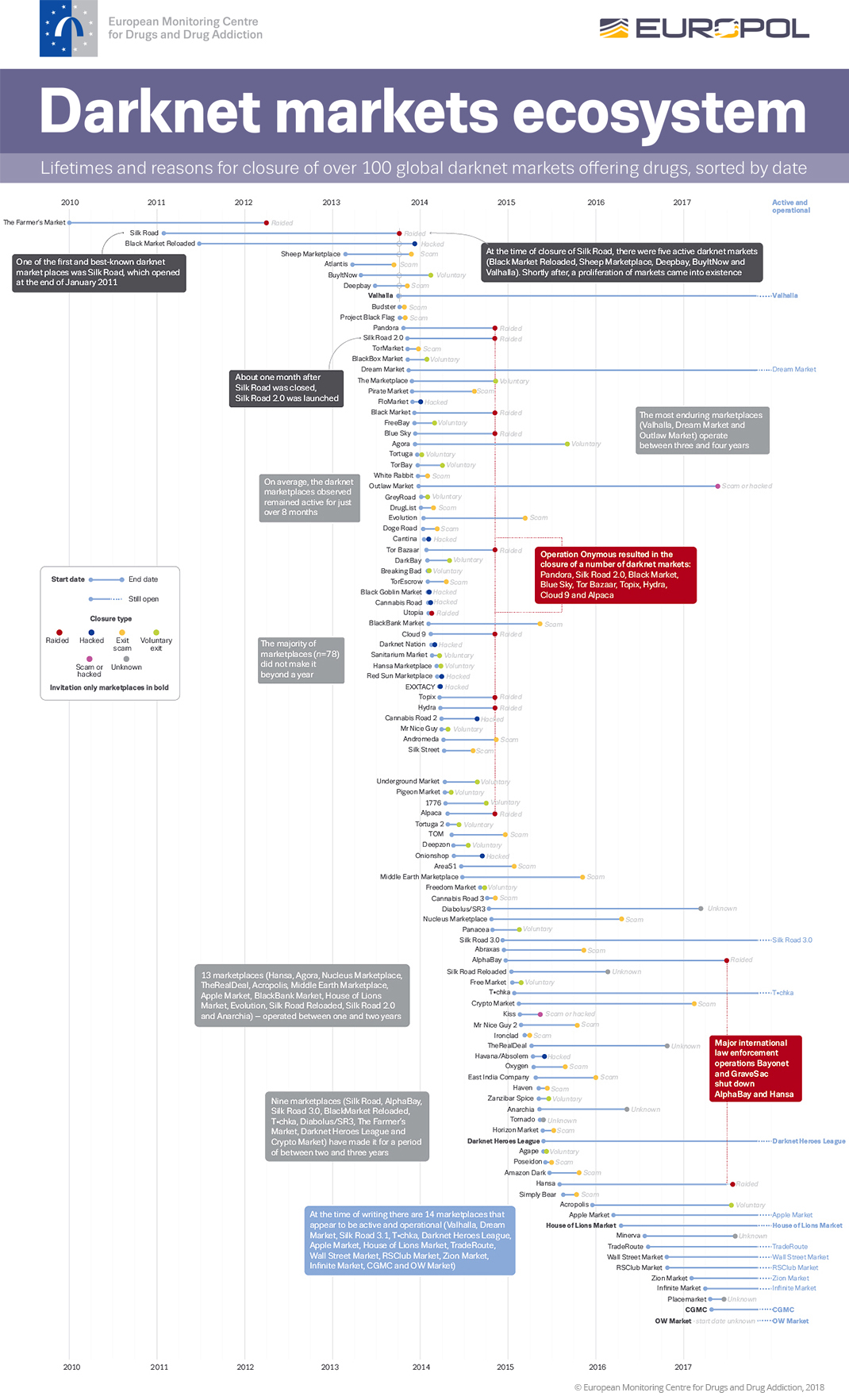Revealing the Shadows: The Ascent and Decline of Black Market Websites

In recent years, the dark web has captivated people's minds, often evoking images of covert deals, illicit goods, and a secret underworld existing past the reach of conventional law enforcement. Among the most infamous aspects of this obscure territory are dark web markets, sites that facilitate the purchase and sale of various illegal drugs to counterfeit documents. As society becomes more and more digital, these markets have evolved, reflecting both the resourcefulness and challenges of the underground economy.
However, the growth of dark web markets is joined by their unavoidable fall. Law enforcement agencies globally have increased efforts to break into and dismantle these sites, resulting in significant raids that have sent shockwaves through the cyber underworld. The ongoing cat-and-mouse game between authorities and users has shaped the ever-changing landscape of the darknet, revealing a complicated interplay of anonymity, safety, and danger. As we delve deeper this issue, we will examine the origins, progress, and persistent issues faced by dark web markets, illuminating a intriguing yet troubling aspect of modern society.
Understanding the Dark Web
The hidden web is a section of the internet that is unindexed by standard search engines. It exists on an secure network, demanding specific software such as Onion Router to access it. This hidden nature allows users to function in secrecy, making it a sanctuary for various activities, both legal and illegal. While many may connect the dark web primarily with illegal transactions, it also serves as a space for liberty of expression and confidentiality, especially in states with authoritarian governments.
Accessing the hidden web requires using dedicated tools that secure users' identities. The most common of these tools is the Tor browser, which secures internet traffic and routes it through various servers. This establishes a level of anonymity for users, shielding them from monitoring and tracing. Despite its image, the deep web also provides forums, communities, and even marketplaces concentrated on legitimate interests, such as personal security advocacy and social justice.
The paradox of the deep web presents a nuanced picture. On one hand, it is notorious for facilitating the trade of drugs, weapons, and stolen data; on the other, it gives a refuge for informants and those desiring to communicate openly without fear of official scrutiny. Comprehending this intricate landscape is essential for apprehending the wider effects of digital confidentiality, security, and the ongoing battle between law enforcement and the forces that function in shadowy areas of the online space.
The Development of Darknet Markets
Hidden marketplaces have witnessed notable changes since their emergence in the early 2000s. At first, these platforms were rudimentary and underdeveloped, primarily operating through discussion boards and basic messaging spaces where participants would exchange goods and services without any structured interface. The secrecy offered by the darknet attracted a specific audience keen on accessing products that were commonly illegal or difficult to obtain through traditional means. Notable early examples include the Silk Road, which set the stage for future markets by utilizing cryptocurrency as a means of transaction, enhancing the confidentiality of its participants.
As digital security protocols increased and law enforcement began to crack down on early markets, darknet markets transformed into more advanced entities. darkmarket 2025 This development led to the creation of intuitive interfaces and sophisticated escrow systems that bolstered confidence and assurance among clients. Competition among markets encouraged advancements, resulting in features like user ratings, vendor verification, and item evaluations. These advancements not only refined the shopping experience but also attracted a greater audience, fostering a sense of community among users who valued the discretion that darknet markets provided.
However, the rise of these markets also initiated a cycle of law enforcement action. Significant operations to shut down major platforms, such as the takedown of the Silk Road in the year 2013, showcased the vulnerabilities inherent in the darknet infrastructure. Despite these efforts, novel markets quickly arose to fill the void, often implementing stronger security measures and using decentralized architectures to avoid detection. This ongoing battle between innovation in darknet market operations and law enforcement approaches illustrates a nuanced dynamic, making the progression of darknet markets a perpetually unfolding narrative.
The Decline and Prospects of Shadow Net Market

The reduction of underground platforms can be attributed to several factors, including increased police efforts and increased examination from internet security specialists. As authorities around the world have ramped up campaigns to shut down major sites, many have discovered it more challenging to function without the constant danger of a seizure or arrest. Notable closures such as Silk Road and Alpha Bay served as key milestones, fostering a feeling of apprehension within the underground community and deterring new vendors from participating in the space. Additionally, the unwillingness of customers to trust upcoming services, often burdened by deceptions or safety breaches, has further contributed to the downturn.
Despite the difficulties faced by operating markets, there continues to be a large need for goods and offerings that the underground provides. This desire may help maintain niche, more targeted services that operate under a lower radar. New technologies, such as decentralized platforms and enhanced security protocols, could restore interest and involvement of shadow net markets. As long as there are users seeking anonymity for different reasons, from privacy issues to illegal actions, the potential for dark web business will always exist, albeit in a changed manner.
In the future, the outlook of shadow net commerce is likely to shift towards increased decentralization and integration of distributed ledger technology. The emergence of crypto assets has provided a more safe method of exchange that is attractive to customers trying to keep privacy. As the landscape changes, emerging market structures may incorporate distributed financial mechanisms, making these platforms harder to dismantle and regulate. While the reduction of conventional dark web sites may indicate the closure of an age, it paves the way to new prospects that could transform how business takes place in the underbelly.
